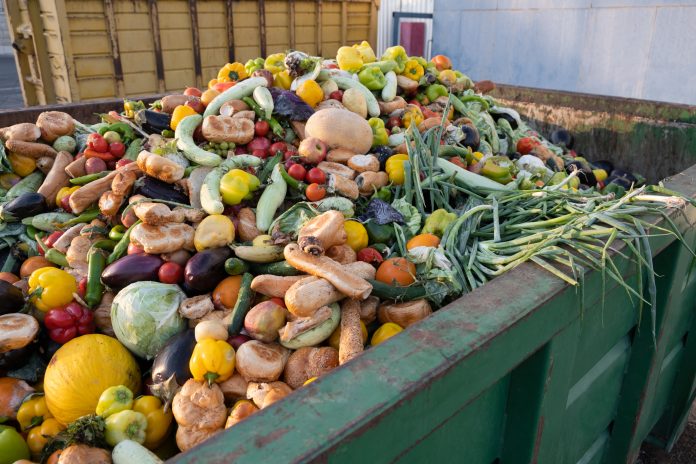Despite the recent government review of net zero policies, food waste’s environmental impact persists, highlighting the importance of anaerobic digestion, writes Pamela Woolcock, Group Public Sector Lead at BioteCH4
Nearly 10 million tonnes of food waste is thrown away annually from UK households, hospitality & food service (HaFS), food manufacturers, retail and wholesale sectors, equating to around 36 million tonnes of greenhouse gas emissions.
No matter what new policies come into force over the next few months and years, the reality is that food waste recycling is a critical component in fighting this environmental burden.
The frustration and disappointment from many, if not all, sections of the food waste circular economy demonstrates our potential to make positive change.
As we mark Recycle Week, we are urging colleagues across local Government and the food supply chain not to abandon food waste recycling and to continue to have open discussions with the industry to understand what’s involved; visit food waste recycling plants to understand the processes and speak to industry leaders.
But what is Anaerobic digestion?
Anaerobic digestion (AD) is the sustainable process of recycling food waste into methane-rich biogas and biofertiliser, a nutrient-rich organic material used to fertilise farmland. Food waste can include everything from a used teabag and vegetable peelings to raw or cooked fish and meat. If it was ‘edible’, then it can be recycled.
Food waste enters a building where it is processed into a liquid porridge and then pumped into the anaerobic digestion plant. It is here that bacteria feed on the food waste, breaking it down to produce biogas. Biogas is captured and used as a fuel in Combined Heat and Power (CHP) units to produce renewable electricity and heat or cleaned and sent directly to the gas grid.
The waste is pasteurised to ensure that pathogens are destroyed, and the fertiliser (digestate) is stored in large lagoons ready to be applied on farmland when the crops require it.
The benefits of Anaerobic digestion
It’s cost-effective – AD is a low-cost process with opportunities to save on landfill taxes or energy from waste gate fees.
The Anaerobic Digestion and Bioresources Association has said that processing food waste at AD plants could save each local authority up to £1.8 million annually, which would benefit many budget holders.
It’s eco-friendly – AD is considered top of the hierarchy for food waste above other processes such as composting, and it’s a positive step towards being more environmentally responsible.
It’s a renewable form of energy – The biogas created from AD is rich in methane and can be converted into renewable energy (heat and electricity) or injected directly into the gas grid to power your gas cooker!
Creating organic fertiliser for farmers – Farmers can use the high-nutrient bio fertiliser produced as a by-product of AD, so when fertiliser costs are high, local authorities using AD support their local farmers.
The potential of an overlooked resource
The benefits of AD to local authorities and food manufacturers are apparent; however, the potential is so much more to our planet. In their report Biomethane: The Pathway to 2030, the Anaerobic Digestion and Bioresources Association (ADBA) projected the UK’s AD industry could generate 7.1 billion m3/year, enough to heat 5.5 million homes by 2030.
With emerging power-to-gas technology, the biomethane potential could increase to 8 billion m3/year by adding hydrogen to the AD process, equivalent to heating 6.4 million homes.
This would deliver a carbon saving of 27.2 million metric tons of CO2 equivalent/year — 6% of the UK’s annual emissions —specifically within the hardest to decarbonise sectors.*
However, delays to consistency collection reforms and the notion of households having seven different bins for their waste have meant the potential of food waste recycling has been lost in the noise.
Government legislation was meant to clarify to local authorities when mandatory food waste collection services had to be implemented.
But after years of waiting, this legislation has now been rebranded the ‘Simpler Recycling’ scheme. It’s frustrating that a sector geared itself up for an increase in food waste collections is now left in limbo again as we wait for more clarity on what this means.
Food waste recycling should be a priority
Many councils across the UK will put food waste recycling at the bottom of their priority list. There’s no legislation and, therefore, no funding to help them introduce these services.
However, we encourage local councils who do not currently collect food waste to continue to explore it as an option and, if possible, implement collections as soon as possible.
In the Government’s 2019 consultation, over 80% of respondents favoured the separate collection of a core set of materials. The demand from residents is there, and the AD industry is willing and ready to support it.
AD can be an ally to local authorities.
Last year, we recycled 557,000 tonnes of food waste across our sites (group), generating 280,000 MWh of energy. And are ready and able to take more food waste when needed.
As an industry, we have been planning for mandatory collections for some time and are prepared to support local authorities and meet the demand in capacity.











